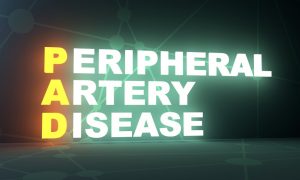
Peripheral artery disease is among the most common health problems all over the world, a problem that affects the body’s circulatory system and manifests in the form of insufficient blood flow to the limbs and to the body’s organs caused by a progressive narrowing of the blood vessels.
The Symptoms of Peripheral Artery Disease
Peripheral artery disease is a condition that might start as early as around the age of 20 or 30 and might linger without causing any symptoms for years or even for decades, until the blockage in the affected blood vessels becomes substantial enough to severely limit blood circulation. The condition is progressive, the layer of the plaque deposits on the blood vessels becoming thicker and thicker over time. If the progression is not stopped in time, the symptoms will eventually appear and will include the following:
- Claudication – the medical term practically means limping or pain when moving the legs. With peripheral artery disease, the symptom can be traced back to an insufficient blood flow to the muscles in the legs;
- Muscle cramping – another symptom that the muscles do not get sufficient blood flow;
- Coldness in the affected limbs, most commonly in the legs;
- Sores and wounds that fail to heal or take very long to heal despite being superficial and small – the blood transports the nutrients and the white blood cells that are necessary for efficient wound healing. When the blood supply is insufficient, wounds cannot heal and tend to become deeper, larger and infected, often leading to gangrene;
- A change in the color of the affected limbs – insufficient blood flow usually causes the affected limb to turn red, bluish or purple.
If left undiagnosed or untreated, peripheral artery disease might progress and become generalized, affecting the blood vessels that supply the body’s major organs, including the heart, the kidneys, the liver and the lungs, threatening organ dysfunction or organ failure.
The Causes of Peripheral Artery Disease
Peripheral artery disease is usually considered to be a consequence of atherosclerosis, a process during which deposits of fat and calcium accumulate inside the body’s major arteries. Many of the factors that increase the risk of developing the condition are related to lifestyle and include smoking, untreated or poorly controlled diabetes, obesity (a body mass index that equals or is over 30), high blood pressure and high cholesterol levels. Aging and hereditary factors also play a role in the development of the disease.
The Treatment of Peripheral Artery Disease
The treatment of peripheral artery disease requires complex medical examinations and a complex approach. Lifestyle changes can help a lot – implementing a suitable, regular physical exercise regimen, weight loss, quitting smoking, avoiding fatty foods and foods that are high in salt are all essential for reversing the process of developing blockages in the blood vessels. Medication is also used efficiently – the drugs prescribed play the roles of reducing cholesterol levels and of controlling blood sugar and calcium levels in the blood. If the disease causes a severe blockage in the arteries, surgical interventions are also available to restore efficient blood flow. It’s good to note that there are PAD treatment Fort Collins doctors offer that can help you treat this disease.
